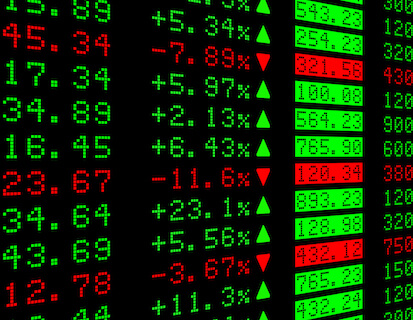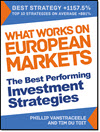When we tested the Qi Value investment strategy in 2015 (and I started using it in my personal portfolio) I didn't think it would work this well.
+1223% return over 22 years
Over the nearly 22 year period from May 2001 to December 2022 we tested the Qi Value investment strategy in developed markets worldwide and it returned an astounding 1223.0%!
This is 8.3 times the 148.1% the market (MSCI World Index) returned over the same period.
Before I tell you exactly how you can implement this strategy in your portfolio first some background information.
We like composite ratios
Here at Quant Investing we are big supporters of combining a different ratios to find undervalued companies. This helps you to find companies that are undervalued from different points of view, for example based on earnings and cash flow.
The first such indicator we told you about was Value Composite One (included in the screener) developed by James O'Shaughnessy.
But it has a problem
The problem with the Value Composite One indicator is that it includes the Price to Book ratio.
We have nothing against you using the price to book ratio to find undervalued companies (it works best after a large correction), the problem is it underperforms the market for long periods of times.
You can read more about the problems here: Be careful of this time tested value ratio.
To solve the problem
To solve this problem we developed a composite valuation indicator, which we called Qi Value.
Not only does it exclude the Price to Book ratio, it also includes all the best valuation ratios we have tested, including the work from the research paper Quantitative Value Investing in Europe: What Works for Achieving Alpha.
Qi Value ranks all companies (around 22,000) in the screener using four valuation ratios. This helps you find the most undervalued companies from different points of view.
How is Qi Value calculated?
Q.i. Value is calculated with the following ratios:
EBITDA Yield
Which is calculated as: Earnings before interest, taxes, depreciation and amortisation (EBITDA) / Enterprise Value
Earnings Yield
Calculated as Operating Income or earnings before interest and taxes (EBIT) / Enterprise Value (Read more about earnings yield here: A simple ratio beats the world’s best value funds)
FCF Yield
FCF (Free cash flow) Yield is calculated as Free Cash Flow / Enterprise Value – here free cash flow is equal to cash from operations minus capital expenditure
Liquidity (Q.i.)
Liquidity (Q.i) is calculated as Adjusted Profits / Yearly trading value.
It thus gives you an indication of how high a company’s yearly traded value per share is compared to its profits. A high value thus means low traded value compared to profits and thus a larger chance of the company’s shares being miss-priced.
A low value means high traded value to profits which, most likely, means more analysts follow the company giving you a smaller chance that it may be miss-priced.
It thus helps you find companies with large controlling shareholders or a stable base of shareholders where traded value is low and thus less analyst interest because they cannot make money trading of the company’s shares.
In the following article can read about our back test of Qi Liquidity: This overlooked ratio, large funds and hedge funds can’t use, gives you higher returns
To start using Qi Value in your portfolio now - Click here
Results of the back test
In the first half of 2015 we tested Qi Value against the market and six other investment strategies over the 14 year period from April 2001 to February 2015.
The following table summarises the results:
Click table to enlarge
Source: www.quant-investing.com
CAGR (Compound Annual Growth Rate)
Index = MSCI World Index
We tested the Qi Value indicator against:
- Earnings Yield (EY) = Earnings Before Earnings and Taxes / Enterprise Value
- Price to Free Cash Flow (P/FCF)
- Price to Earnings (PE)
- Earnings before interest, taxes, depreciation and amortisation / Enterprise value (EBITDA Yield)
- Price to Sales (PS)
- Price to Book (BP)
Qi Value is a lot better
As you can see Qi Value performed better than all the other ratios, except the average return of the Price to Sales ratio was higher.
Apart from that the Qi Value had a:
- The highest total return +477.6%
- The highest compound annual growth rate over 14 years
- The lowest standard deviation which means Qi Value returns were not as volatile as the other ratios
- The highest Sharpe ratio (higher is better) which means it would have given you higher risk adjusted returns. Here is the Sharpe ratio definition.
What about 2016 to 2022?
Since we finished the back test we have continued tracking the results to make sure our back test remains valid.
Here are the updated results:
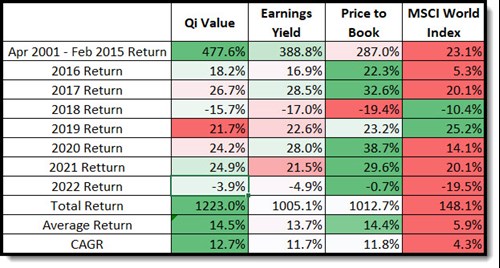
Colours show horizontal returns (Dark Green = Highest, Dark Red = Lowest)
Source: www.quant-investing.com
CAGR (Compound Annual Growth Rate)
As you can see Qi Value continues to do well. Not the highest returns but very consistent high returns.
8.3 times better than the market
In spite of that Qi Value’s total return of +1223.0% was the highest, 8.3 times that of the market and 210.3% better than Price to Book the second best performing strategy.
Not all strategies tested again
Just in case you were wondering - we are not selectively showing the results of other strategies so that Qi Value looks best we do not test all the strategies all the time as it is a lot of work.
To start using Qi Value in your portfolio now - Click here
How to start using Qi Value in your portfolio right now
Where can you find it?
Q.i. Value indicator, like all ratios and indicators in the screener, is very easy to find and use.
You can select it in any one of the four funnels (or filters) as shown below. Qi Value is one of the last items under the Valuation heading.
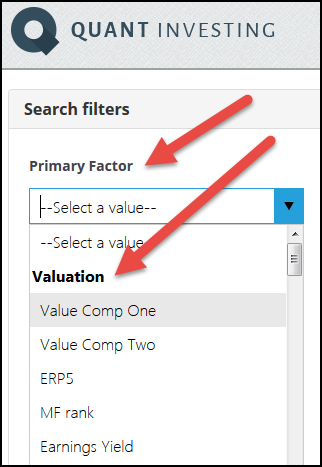
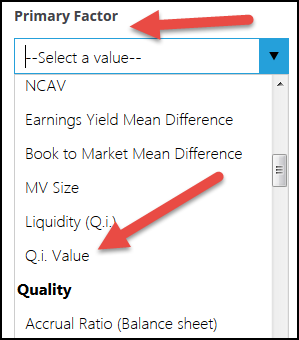
Get the most undervalued companies
To find the most undervalued companies set the slider from 0% to as far as you would like to go. The top 30% most undervalued companies are selected in the image below.
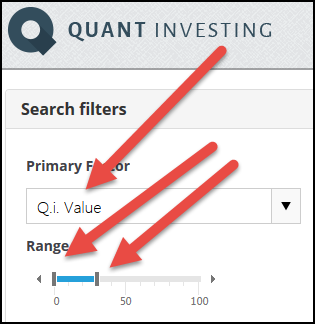
Combine Qi Value with your investment strategy
Once you have selected undervalued companies with Qi Value you can of course add your favourite ratios or indicators – here are a few suggestions:
Momentum
Combine Qi Value with the following indicators to find companies with an upward moving share price – this is a good way to avoid value trap companies.
The following are all good indicators to use:
- Price Index 6 months
- Price Index 12 months - 1 month
- Price Index 12 months
- Adjusted Slope 125/250d
- Adjusted Slope 90d
You can find the exact definition of all ratios in the Glossary.
This proves that momentum works
You can read more about why and how momentum works here:
10 myths about momentum investing, squashed
How to find stocks on the move with a better momentum indicator - exponential regression
This easy to use adjusted slope momentum strategy performed 7 times better than the market
Piotroski F-Score
The Piotroski F-Score is a great indicator you can use to only select good quality companies – I use it all the time with the screens I use.
You can read more about the Piotroski F-Score here:
Can the Piotroski F-Score also improve your investment strategy?
Use the Piotroski F-Score to seriously improve your returns
This academic can help you make better investment decisions – Piotroski F-Score
Market leaders (large companies on steroids)
If you prefer investing in large companies this is a great universe to be looking for ideas in. It is a list of large companies world-wide selected using sales and Free Cash Flow generation.
You can read more about what exactly market leading companies are and where to find it in the screener here: Large companies on steroids – Market Leaders
The best valuation ratio you can use
From all the above research I am sure you will agree that Qi Value is a great indicator because it finds undervalued companies using a number of proven ratios that it combines into a single ranking value.
Its results speak for themselves, higher returns with lower volatility, something I am sure you are also interested in.
PS To get access to the Qi Value indicator calculated for over 22,000 companies world-wide as well as more than 110 other ratios and indicators why not sign up right now, it costs less than an inexpensive lunch for two, just click here: join now
PPS It’s so easy to put things off, why not sign up now to start improving your investment returns.

